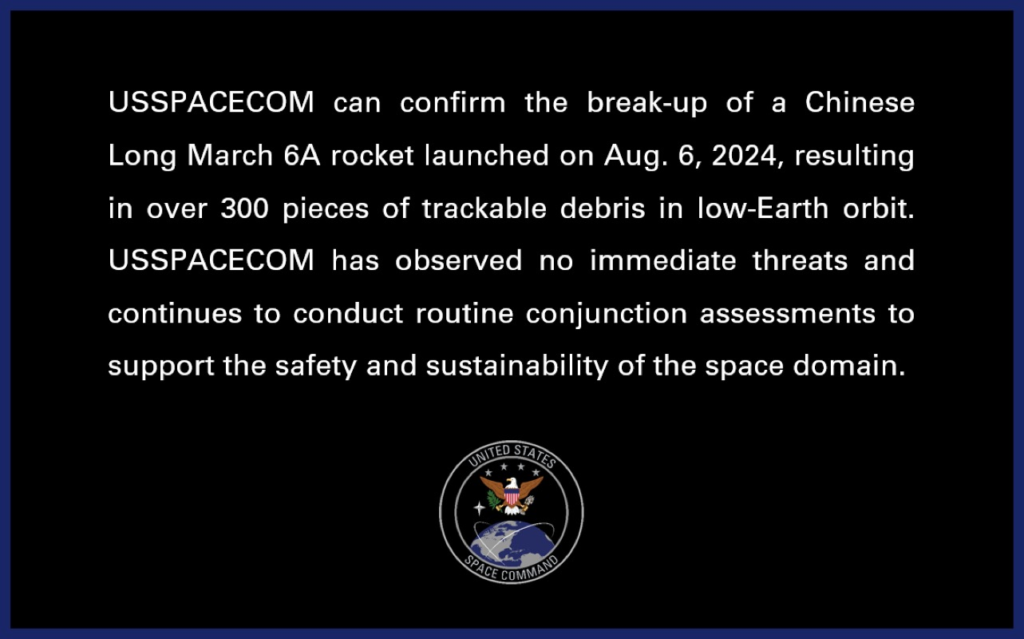Florida, August 9, 2024: The Starlink team is keeping a close eye on debris resulting from a recent mishap involving the upper stage of a Chinese Long March 6A rocket. The rocket, which launched earlier this week, experienced an issue that has left fragments of its upper stage orbiting Earth at an altitude of approximately 800 kilometres. This debris, due to its high orbit, is expected to remain in space for decades, although it currently poses no immediate threat to the Starlink satellite constellation.

The Starlink constellation, operated by SpaceX, is designed to provide global broadband internet coverage. The company has proactively managed space debris risks by deploying its satellites in lower orbits, typically below 300 kilometres. This strategy ensures that any debris from SpaceX launches re-enters Earth’s atmosphere and disintegrates within a few days, minimizing long-term debris accumulation.
Also Read: OpenAI Poses a Greater Threat to Google Than US Regulators
SpaceX’s approach has been instrumental in addressing concerns about space debris, a growing issue as satellite launches increase globally. In contrast, higher altitude debris, such as that from the Chinese rocket, remains in orbit longer and poses more significant challenges for space traffic management.
The Starlink team continues to monitor the situation closely and is coordinating with space agencies and other stakeholders to ensure the safety and sustainability of space operations.
Key Points
- Debris Monitoring: Starlink is tracking debris from a Chinese Long March 6A rocket mishap.
- Altitude and Longevity: The debris orbits at approximately 800 kilometres and is expected to remain in space for decades.
- Current Threat Level: The debris does not pose an immediate threat to the Starlink satellite constellation.
- SpaceX Strategy: SpaceX deploys Starlink satellites below 300 kilometres to ensure any debris re-enters the atmosphere within days.
- Debris Management: SpaceX’s lower orbit deployment strategy helps minimize long-term debris issues compared to higher altitude debris.
- Space Traffic Coordination: Starlink is working with space agencies and stakeholders to ensure the safety and sustainability of space operations.



